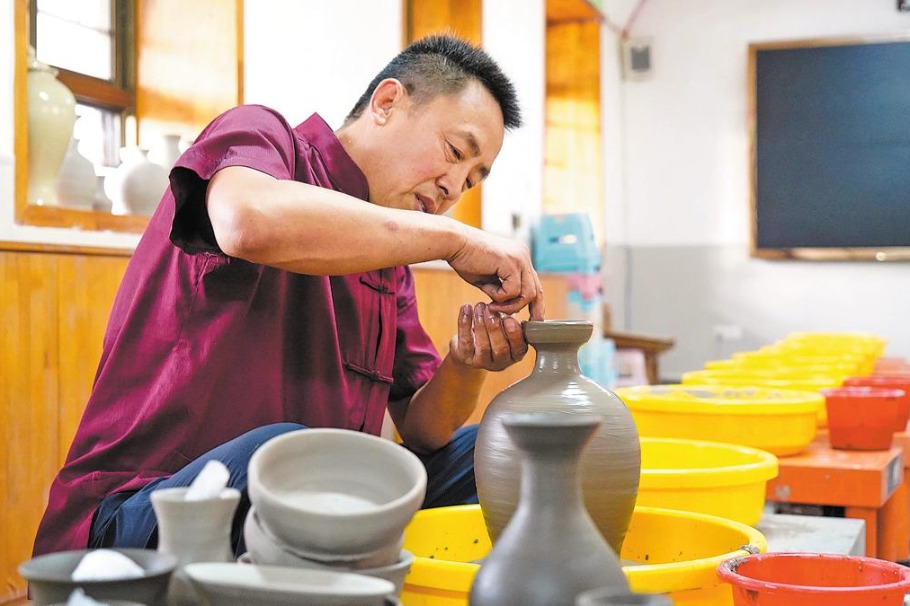Breaking the language barrier is child's play

Chineasy founder Shao-Lan Hsueh is on a mission to break down the language barrier surrounding Chinese any way she can.
She started with the book Chineasy: The New Way to Read Chinese, released in the US in 2014, which basically teaches the meaning of about 400 essential characters by encasing them in clever and often amusing illustrations (created by a team of artists at her headquarters in London).
From there, she dissects each one and reassembles it, demonstrating how the Chinese language is put together. Hao, the word for good, for instance, is a combination of the character for woman and boy, suggesting motherhood is a good thing. The term for eating is an open space representing a mouth and next to it the squiggle for begging.

She is convinced that Chinese is a lot easier than most people think and her goal is to get beginners a basic knowledge of 1,000 or so characters quickly. She points out that the government in China requires that people should be able to read newspapers with just 1,500 characters, while university students need a few thousand.
She's shooting for something in between and hoping the "network effect" will guide students from there. "Knowing one or two (characters) you can create three or four; knowing tens you can make hundreds; knowing 50 or 70 you can create thousands," she said.
She has been sharing her approach with educators and students the world over for years (to the tune of 400,000 followers online), garnering feedback and suggestions and her latest tool is a board game called Chineasy Tiles: Play to Learn Chinese.
Conceived after extensive testing of hundreds of groups of non-Chinese speakers by teams in London, at MIT and other classrooms around the world, the game uses 48"essential character" tiles: rain, woods, good, not/no, dog, white, and so on, with their giveaway illustration and an English word on one side and the plain character with pinyin term on the back.
In an online demonstration, she demonstrates how easily rudimentary sentences can come together using the tiles as building blocks. "Eat" plus "big" means "eat like a pig". "Small" plus "eat" means snack, or street food. "Cow" plus "water" means buffalo.
"No" plus "eat" plus "cow" plus "meat"... you get the idea. But the brilliance of the Chineasy approach is that it emphasizes the pluses of the language for an outsider: there is no grammar, no tense, no "he or she" gender and no hard-and-fast ordering of words in a sentence.
The game set comes with a set of large tiles and a game board and a sack of smaller tiles with five-by-five racks for playing a version of Chineasy Bingo. Hsueh said that 1,500 teachers worldwide are coming up with new games and ways to use the pieces. She said she is flattered that some people have been calling Chineseasy "the alphabet of Chinese".
"But we're not there yet," she said. "We don't cover all 200,000 characters, just aim for a very basic literacy by knowing a few thousand quickly."
Contact the writer at chrisdavis@chinadailyusa.com
(China Daily 08/08/2017 page2)
- Ultra-cheap dress blind boxes spark health, quality concerns
- Chinese researchers find new treatment path for high-risk breast cancer
- China cracks down on organized crime involving minors
- Two Taiwan suspects wanted in mainland smuggling case
- Lhasa promotes initiative to foster a skilled workforce
- Beijing makes it easier for families to buy property




































